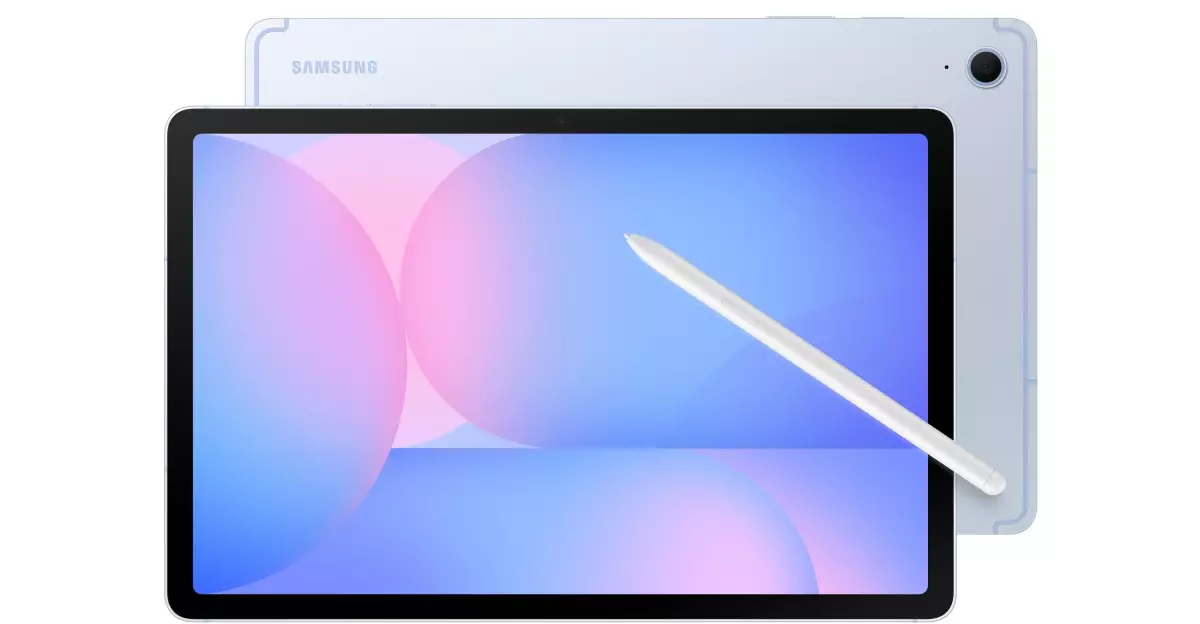Samsung has taken a bold step in the realm of midrange tablets with the launch of the Tab S10 FE and Tab S10 FE Plus. These devices introduce unique screen sizes that break away from the conventional Tab S10 lineup, thus catering to users who are searching for specifications that lie outside the mainstream domain. The Tab S10 FE offers an approachable 10.9-inch display, a size that has become somewhat of a norm for standard tablets but not directly represented in the previous iterations of Samsung’s Tab series. In contrast, the FE Plus elevates the experience with a 13.1-inch screen that cleverly bridges the gap between the previously established S10 Plus and the larger S10 Ultra.
The implications of this strategic move are significant. By providing these intermediate sizes, Samsung is not only diversifying its product lineup but also addressing a crucial demand for specific display dimensions that enhance user experience—particularly in fields like e-reading, gaming, and creative applications. The arrival of these tablets provides an exciting opportunity for users who feel constrained by the options in the mainstream range.
Upgraded Specifications, Reasonable Expectations
Diving into the specifications reveals that Samsung has maintained a certain consistency while introducing noteworthy upgrades. Both the FE and FE Plus come equipped with the Exynos 1580 chipset, marking a significant enhancement over the previous Tab S9 FE models’ Exynos 1380. Users can expect performance improvements for tasks ranging from productive multitasking to demanding graphic applications. This upgrade is critical in a time where software complexity is on the rise, enhancing browsing capabilities and overall app performance.
However, while the increase in processing power provides benefits, the decision to stick with LCD panels instead of OLED technology raises eyebrows. The limitations of a mere 90Hz refresh rate might deter some users, particularly those accustomed to the fluidity offered by higher-end models with OLED displays. In a market that is emphasizing visual quality more than ever, this could be seen as a missed opportunity on Samsung’s part, especially when competitors are pushing boundaries to integrate superior display technologies.
Camera Capabilities: A Step Backwards?
In a surprising move, the Tab S10 FE Plus reduces its camera competencies by eliminating the previously featured ultrawide lens. While it still sports a new and improved 13-megapixel sensor for its single rear camera, the decision to simplify camera options seems contradictory to contemporary user expectations who often look for versatility in photography. The tablets may likely shine in casual photo scenarios, but for those who prioritize creative photography, especially wide-angle shots, this reduction might result in disappointments.
Samsung appears to be focusing on keeping costs manageable by cutting back on certain features; however, with consumers placing a premium on multi-functionality, this decision could easily reflect poorly on the brand.
Accessories and Integration: Practical Yet Simplified
Another area of interest is the S Pen stylus that accompanies both models. While it is included in the box, its lack of Bluetooth capabilities mirrors a similar decision seen in the newly launched Galaxy S25 Ultra. The stylus, although practical for note-taking and casual drawing, misses out on advanced features designed to enhance productivity. Given the competitive landscape of tablets designed for professionals and creatives, Samsung’s choices will force users to evaluate whether these limitations meet their needs. The S Pen’s lack of advanced integrations could alienate some potential customers—an area where competitors may already have an upper hand.
Price Point: A Strategic Play?
Both the Tab S10 FE and FE Plus come with a price tag that has seen a $50 increase from their predecessors, with the base model starting at $499.99 and the Plus version retailing at $649.99. This move raises questions about value for money, especially considering the limitations on display technology and camera functionalities. While price increases are often justified through enhanced specifications, many potential buyers may wonder if these modest improvements are truly worth the extra expenditure. As savvy consumers weigh their options, Samsung’s strategy will be put to the test against other brands that provide competitive pricing and feature-rich alternatives.
The introduction of a 5G variant for the Tab S10 FE also reflects Samsung’s recognition of the growing demand for connectivity, but the $100 premium adds to the overall cost, likely alienating budget-conscious customers.

